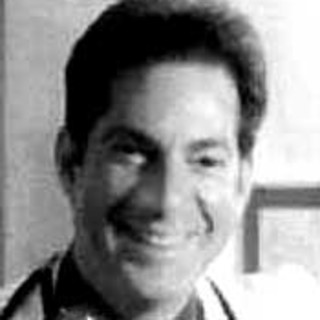
I have heard that our osteopathic medical schools are cutting back substantially on the training of osteopathic manipulative medicine (OMT) because of the lack of reimbursement from insurance companies. Historically, there have been Osteopathic Medical Hospitals around the country. But as the insurance reimbursements have started evaporating, so have the residency training programs in OMT and in hospital osteopathic referral consults.
Recently, BlueCross BlueShield (BCBS) of Illinois, and its affiliates in Texas, New York, Indiana, and Michigan, suddenly decided that OMT can no longer be applied to an established (or even new) patient on the same day of service. BCBS has, for the past two years, been recanting earlier precedent established jointly by the American Osteopathic Association (AOA) and BCBS to stop the unfair bundling of evaluation and management (E&M code, office visit) and OMT procedures delineated by CPT 10 code (procedure code).
BCBS's new approach is to tier – profiling for the purpose of auditing – such practices and require preauthorization, which unnecessarily delays patient care.
A typical scenario seen in-clinic is an established patient presenting with acute cervicalgia, rotator cuff sprain (or possibly a tear), left knee swelling and pain after playing a weekend game of football. Coding for the office visit will include the E&M code for the rotator cuff sprain, cervicalgia and left knee medial collateral ligament (MCL) sprain, as well as somatic musculoskeletal dysfunction. Then the associated medical treatment procedure code (CPT code) for OMT is provided with all the proper documentation. BCBS insurance, however, will only pay for the OMT procedure but not office visit for same-day treatment. Instead, they will pay for OMT, provided the patient makes another appointment to come in the next day. So, in essence, the patient is inconvenienced and complains that he/she has to take off more time from work, rearrange his/her schedule and travel back and forth to the second appointment the next day. Note that if treatment is not rendered on the same day, the patient's medical condition could worsen, causing him/her to experience needless suffering.
Thus, BCBS will only pay for the lesser of the charges, namely OMT, stating unequivocally that the CPT code for somatic dysfunction implies E&M! How does this differ from a gynecologist who evaluates a patient for microscopic urinary hematuria and decides to perform a cystoscopy that same day? This is obviously ludicrous! Interestingly, the AOA has been unable to resolve this issue for over 2 years!
As physicians who pay annual membership dues to this professional trade association, how can we justify paying such monies? Where is the professional representation with the health insurance industry? It is not only implied, but promised by AOA leadership! I, as well as many other osteopathic physicians in active practice, have been calling the AOA Department of Physician Payor Relations for years asking for answers and getting multiple excuses about their apparent ineffectiveness at brokering a suitable resolution to this issue.
Osteopathic physicians have important skills applicable in the treatment of neuromusculoskeletal pain ranging from migraine headaches, sports injuries, cerebral palsy, autism, low back pain, carpal tunnel syndrome, radiculopathies and concussion. In addition, OMT has application across a variety of medical conditions, e.g., asthma, chronic obstructive pulmonary disease (COPD), inflammatory bowel disease (IBS), chronic sinusitis, anginal pain secondary to coronary artery disease, and shock/depression secondary to traumatic emotional or physical etiology. As you can see, OMT is applicable to orthopedic, internal medicine and psychiatric illness.
The osteopathic physician and surgeon is trained in a unique philosophy as compared to the traditional MD—in fact, an osteopathic physician receives 1,000 additional hours OMT. If OMT is not insurance reimbursed, this training will cease, and the two professions will merge, with a resulting loss in knowledge that has, and can, help hundreds of thousands of patients. There are about 100,000 osteopathic physicians and surgeons working in every state and in all medical institutions. This insurance fiasco will cheat thousands of patients and make their treatments ordinary rather than unique for them.
Over the past several decades MDs have also sought out post-residency graduate training in OMT (1/3 of participants are MDs) through the auspices of the AOA, Cranial Academy (specializing in cranial/sacral osteopathy) and the American Association of Orthopedic Medicine (AAOM). I was one of the past presidents of the AAOM. The unique differences that Osteopathic Principles and Practice (as opposed to ordinary allopathic/MD philosophy) offers are slowly and systematically being wiped from the medical therapeutic armamentarium. These are available to both DO and MD alike but are being eliminated by the insurance oligarchy for their monetary self-interests. BCBS, Aetna, and United are not the point-of-service provider that physicians are. These physicians and surgeons have dedicated themselves to humanity and to the service of others for well over the past 100 years.
It is common knowledge how inequitably the insurance companies have reimbursed physicians and their patients over the past several decades. Now, reimbursement is further reduced by over 50 percent!
Without proper insurance reimbursement, no physician will do, nor will any patient in need receive, OMT. And osteopathic medical schools will not teach it the the distinctive osteopathic difference will cease. Osteopathic schools will merge with allopathic (MD) schools, the osteopathic profession will cease, and with it the lifesaving aid we osteopathic physicians and surgeons could have rendered. We will be just ordinary, not extraordinary, doctors. Osteopathic medicine will end, undermined by the health insurance companies.
"The doctor of the future will give no medication but will interest his patients in the care of the human frame, diet and in the cause and prevention of disease." ― Thomas A. Edison
David J Zeiger, DO, FAAFP, ABOIM is the Past President of the American Association of Orthopedic Medicine and the Healthworks-Integrative Medical Clinic Medical Director.
Dane J Shepherd, DO (practice limited to Acupuncture, Homeopathy and Osteopathic Manipulative Medicine).







